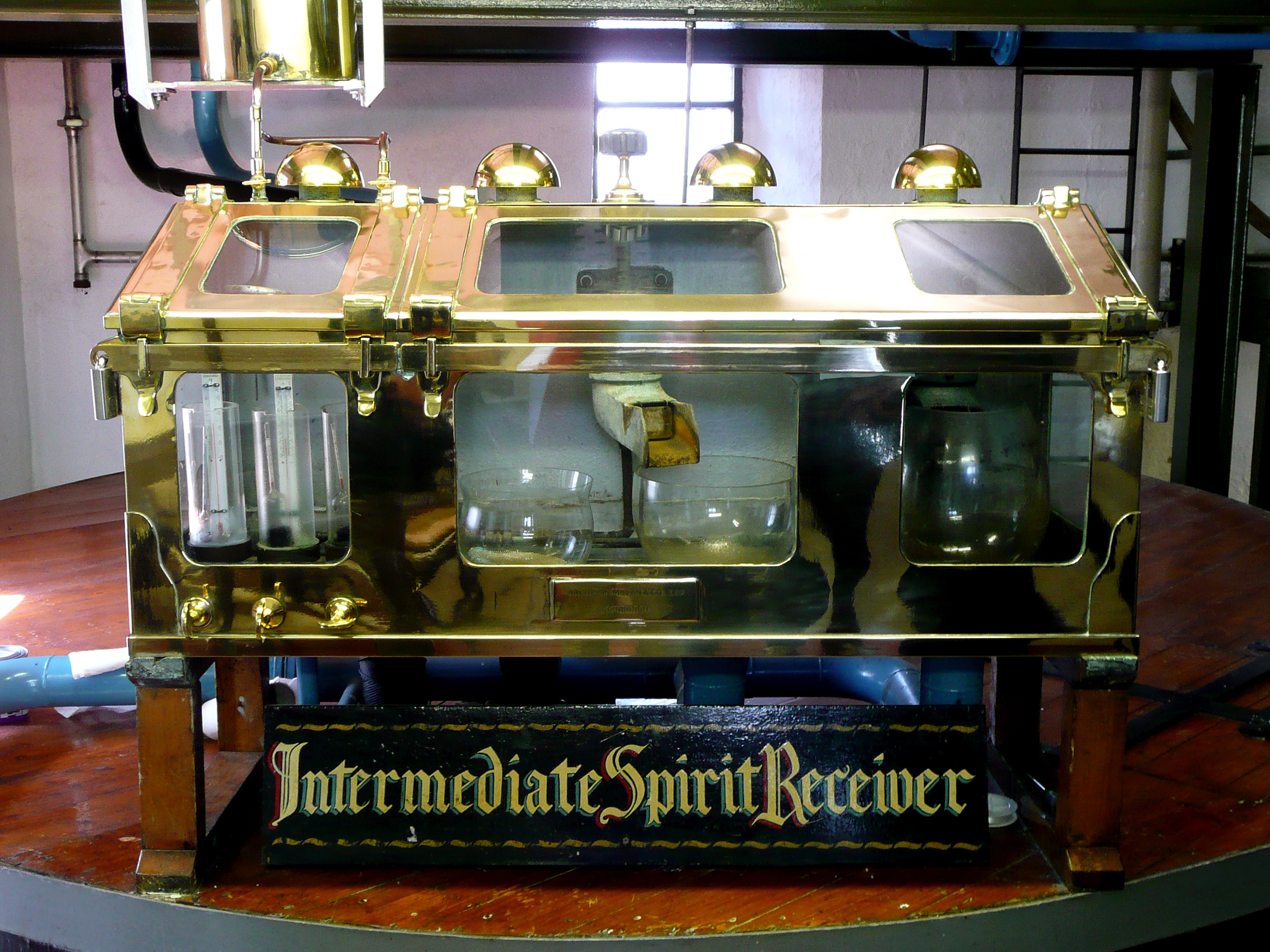
http://www.glenlochy.com/SS_how_it_works.html
http://homedistiller.org/forum/viewtopic.php?f=1&t=19169&start=12
There are many ways to establish the heads cut of a distillate but they never seem to be compared and contrasted under one roof. Some of the techniques have developed and been promoted due to excise restrictions. For example, before self policing, distillers in the UK had to use a locked spirit safe to control the distillate. They were never free to take samples and nose the distillate like the rural mezcal distillers of Oaxaca. Tight excise restrictions, as commented on by S.H. Hastie in the early 20th century, meant you could not pull samples and perform congener analysis which could ultimately lead to time & volume best bets like the sophisticated distillers of Cognac. A hydrometer reading alone is not enough to guide a heads cut, so under the reign of the spirit safe was the time honored tradition of demisting.
Demisting involves taking a sample of the spirits run as it is collected and diluting it with water to see if it louches. The spirits run would continue to be collected in the foreshots receiver until the sample failed to louche. The spirits safe has a compartment with a water supply where this visual test can be conducted while locked (left compartment of the above photo).
At the chemical level, the demisting test is slightly counter intuitive. What is louching is not even from the heads of the new distillate, it is rather residue left in the condenser from the tales of the previous distillate. These congeners from the previous distillate are not so soluble in water therefore as the proof is lowered, they start to come out of solution and louche. If the still is too clean and you essentially have no previous distillate, you cannot perform a demisting test.
The demisting test is therefore like a timer. The heads contain congeners you do not want and you use the ability to visually test for removal of the long chain fatty acid residue from the previous distillation (which you also do not want) to time the whole process. Luckily they coincide fairly well, but often these days the heads cut is pushed beyond the point of demisting clarity to make a relatively lighter spirit.
Failure to make the cut properly (and abandon all cuts) can result in what is called a blank run which is when no cuts are made. The run has to be re-executed but the results will not be the same as normal because the distillate has been effected by time under heat. In the Distiller’s workbook, new distillers are encouraged to not be afraid of making mistakes under the confidence they can toss everything back in the still and start over again. This advice of essentially accepting a blank run is mostly correct in regards to those practicing the handling of the still on the small scale, but on a chemical level, distillers must be aware reactions have happened and the distillate and its various equilibriums are no longer the same.
Obsolete to the biggest commercial distillers, the demisting test may continue to be relevant to low involvement distillers and as a starting point for new projects.
There is a spectacular website devoted to the spirit safe that catalogs all the known safes and has brilliant photographs. I think the owner of the site was the purchaser of this spirit safe when it came up for auction.
4 thoughts on “Demisting & The Spirits Safe”